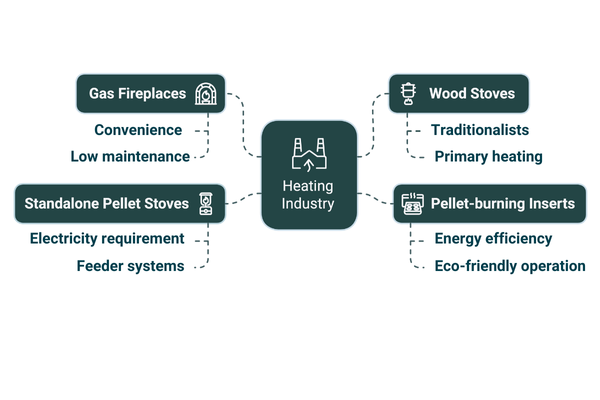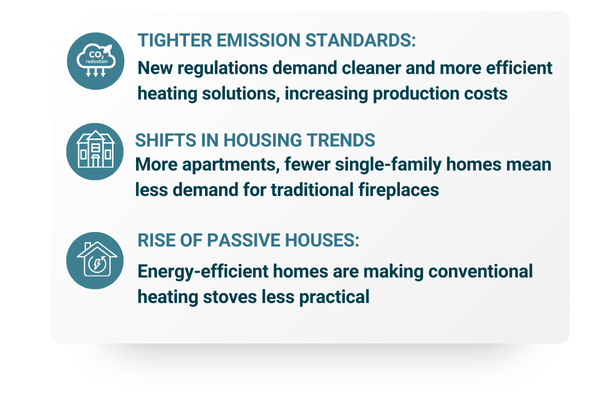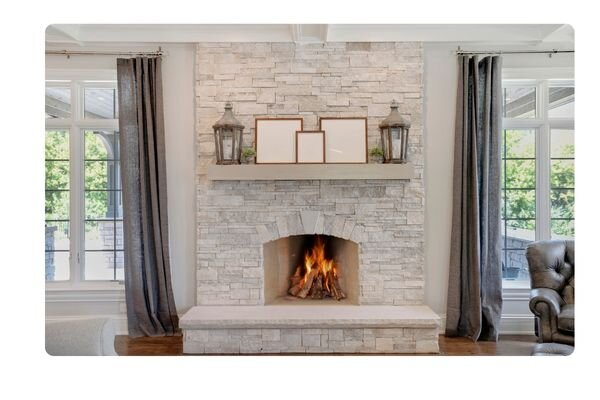The Fireplace and Heating Stove Industry: A Landscape Ripe for Consolidation
The Fireplace and Heating Stove industry, long characterized by fragmentation and diverse product offerings, is poised for significant transformation. As larger players and private equity-backed firms eye opportunities for consolidation, the sector is witnessing a shift that could reshape its competitive landscape and drive innovation.

A Fragmented Market with Diverse Players
The industry is currently populated by a multitude of companies, each with its own focus and specialization.
From gas fireplaces to wood stoves, pellet-burning inserts to standalone pellet stoves, the product range is as varied as the companies that produce them:
This diversity in product offerings reflects the fragmented nature of the industry, with numerous small specialists coexisting alongside a handful of larger companies. However, this fragmentation also presents significant opportunities for synergies and economies of scale through consolidation.
Opportunities for Synergies and Growth
The varied landscape of the fireplace and heating stove industry opens up numerous avenues for strategic growth and synergies. Companies looking to expand their market presence have several potential strategies at their disposal:

-
Product Development: Combining technologies and expertise from different specializations could lead to innovative hybrid products
-
Cross-Selling: Firms with complementary product lines could leverage each other's customer bases to increase sales across their entire portfolio
-
Geographic Expansion: Mergers or acquisitions could provide instant access to new markets and distribution networks
-
Operational Efficiencies: Consolidation could lead to streamlined operations, reduced overhead costs, and improved supply chain management
Structural Challenges in the European Market
The fireplace and heating stove industry faces significant challenges in the European Union, despite opportunities for consolidation and growth:


1) Changing Housing Trends
Fireplace stoves and inserts are primarily installed in single-family houses, but apartment construction now dominates due to rising property prices. In Germany, single-family home construction has drastically decreased from 250,000 annually in West Germany alone during the 1970s to less than 100,000 in united Germany today, with numbers still declining
2) Tightening Emission Standards
Stricter environmental regulations require dust separators and chimney particulate traps, increasing product complexity and costs. This may lead to decreased demand as consumers seek more cost-effective alternatives
3) Rise of Passive Houses
The growing emphasis on energy-efficient construction, particularly passive houses, poses challenges for traditional fireplaces and inserts. These products may cause overheating in highly insulated homes, making them less desirable or impractical
These challenges necessitate innovation and adaptation in the industry. Companies must develop products aligned with changing housing trends, environmental standards, and energy-efficient building designs. Industry consolidation may benefit larger entities better positioned to invest in necessary research and development.
The Role of Strategic Buyers
The industry's structure makes it particularly attractive for strategic buyers looking to expand their presence or diversify their offerings. Potential strategic buyers fall into several categories:
-
Competitors in the Fireplace and Heating Industry
Existing players in the sector may seek to expand their product portfolios, increase market share, or extend their geographical presence through acquisitions. The integration of complementary technologies and product lines could strengthen their competitive position
-
Renewable Energy and Sustainability Companies
As the focus on green energy and sustainable heating solutions grows, companies in this sector might see opportunities to integrate fireplace and heating stove technologies into their products. This could allow for cross-selling and broadening of their offerings in the sustainable home heating market
-
Hearth Distribution, Home, and Building Supply Companies
Large distribution companies, home improvement retailers, or construction supply firms might view the acquisition of fireplace and heating stove manufacturers as a way to expand their product range and create bundling opportunities. This vertical integration could provide significant distribution synergies
Private Equity's Growing Interest
The Fireplace and Heating Stove industry has increasingly caught the eye of private equity investors. Research indicates that at least 39 companies in the industry are currently within private equity portfolios. These include Wanders Fire’s and Stoves, Stuv, Invicta, and Lohberger. This growing interest from professional investors suggests that they see significant potential for development and growth in the sector.
On the cusp of significant change, the industry faces both opportunities and challenges. While the fragmented nature of the market, combined with the interest from strategic buyers and private equity firms suggests potential for consolidation and transformation, significant structural challenges in the European Union are reshaping the landscape. As this process unfolds, we can expect to see a more concentrated industry landscape, with larger players leveraging economies of scale and driving innovation in home heating solutions.

